MIO - Screw fixation
1. Principles
Indication
Impacted surgical neck fractures without comminution, if the fracture plane is oblique and long enough, may often be fixed satisfactorily with lag screws after closed reduction.
Disimpaction
Disimpaction is the key to successful reduction.
Proper reduction
After reduction, alignment should be correct in both sagittal and coronal planes. Rotational alignment must also be correct.
Risk of axillary nerve injury
The main structure at risk is the axillary nerve. The axillary nerve should be protected by limiting the incision to less than 5 cm distal to the acromial edge, by palpating the nerve, and by avoiding maneuvers that stretch the nerve during reduction and fixation. Remember the course of the nerve when placing K-wires.
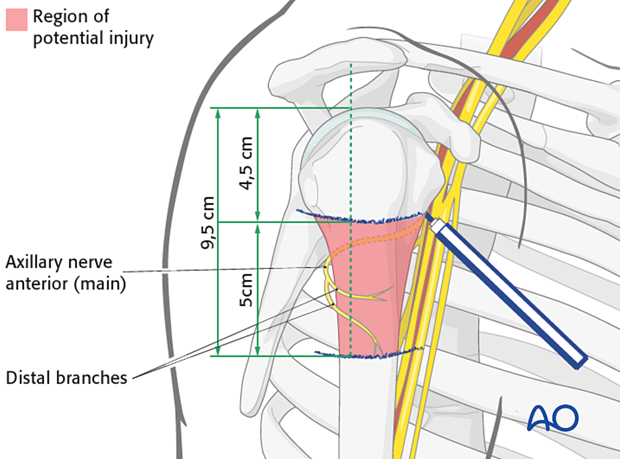
2. Patient preparation and approach
Patient preparation
This procedure is normally performed with the patient in a beach chair position.
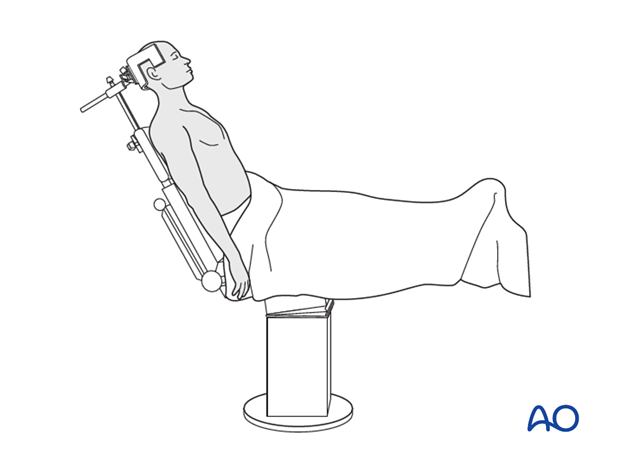
Safe zones for screw insertion
Inserting percutaneous instrumentation through the safe zones reduces the risk of damage to neurovascular structures.
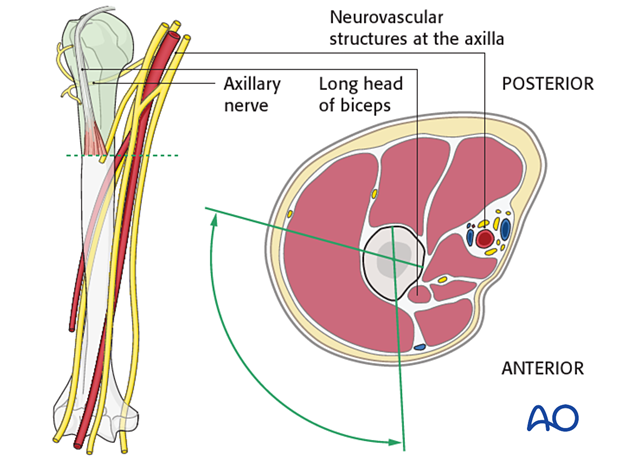
3. Reduction and preliminary fixation
Fracture reduction
Since the fracture is not exposed, the surgeon should be skilled at closed reduction maneuvers.
Distal traction, perhaps augmented with increased angulation, will help to disimpact the fracture.
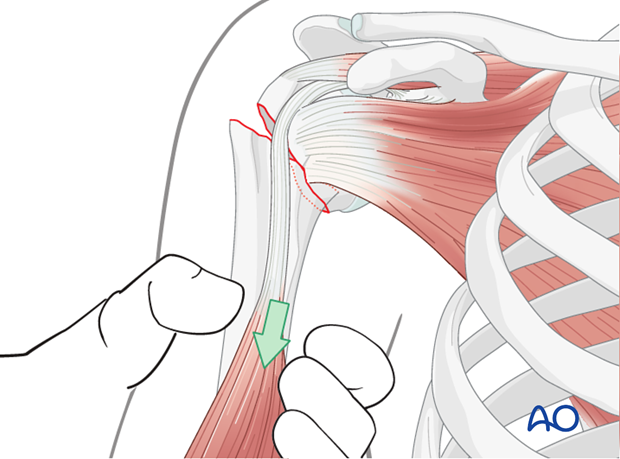
Use of an elevator
A small incision allows incision allows insertion of an elevator to disimpact the fracture. This also helps to correct inclination/torsion and to restore a normal relationship of the medial fracture surface. The proximal fragment should be reduced anatomically to the shaft.
The actual process of reduction is done with image intensifier control.
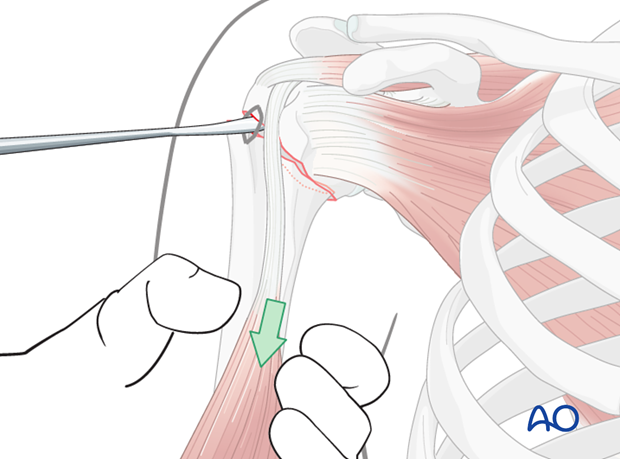
Joy-stick technique
Threaded pins or K-wires may be inserted into the proximal fragment and used as joy sticks for fracture reduction. However, this technique may be less effective in osteoporotic bone.
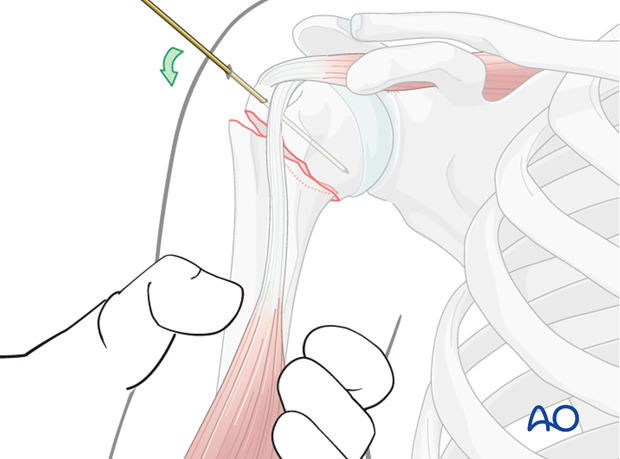
Preliminary fixation
The reduction of the humeral head is temporarily secured using 2 to 3 K-wires. Make sure to place the K-wires such that they will not interfere with the later screw positions.
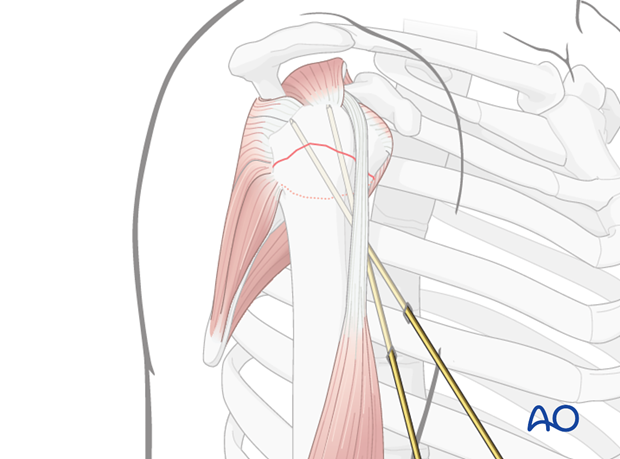
Confirm reduction
Confirm the reduction by image intensification in two planes.
Attention should be paid on the correct alignment of the proximal humerus in all planes. Particularly varus malposition has to be corrected. The medial “calcar” region should be well opposed.
A slight impaction can be tolerated in the elderly, and it may increase stability.
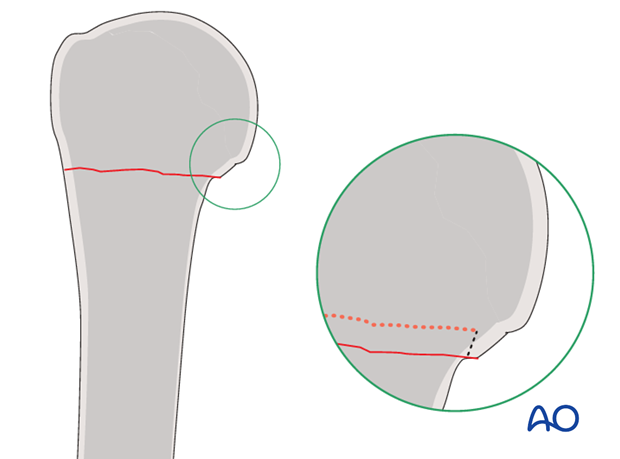
4. Fixation
We illustrate the use of 3.5 mm cannulated screws. A larger diameter screw may be preferred for larger bone fragments, particularly in the surgical neck region. Since interfragmentary compression is desired, use a lag screw technique, with partially threaded screws inserted so screw threads do not cross the fracture line.
Guide wire insertion
At least two screws should be inserted to fix the fracture. Therefore, insert guide wires at the foreseen cannulated screw positions. Make stab incisions and use blunt dissections to spread the muscles. Check the position of the guide wires by image intensification.
Note: axillary nerve
Beware the axillary nerve and the bicipital tendon.
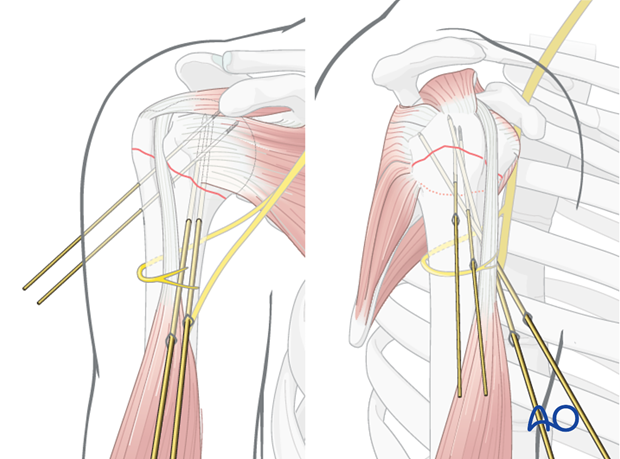
Cannulated screw insertion
Insert partially threaded cannulated screws of correct length over the guide wires. The screw must not perforate the articular cartilage. Use washers only in osteoporotic bone.
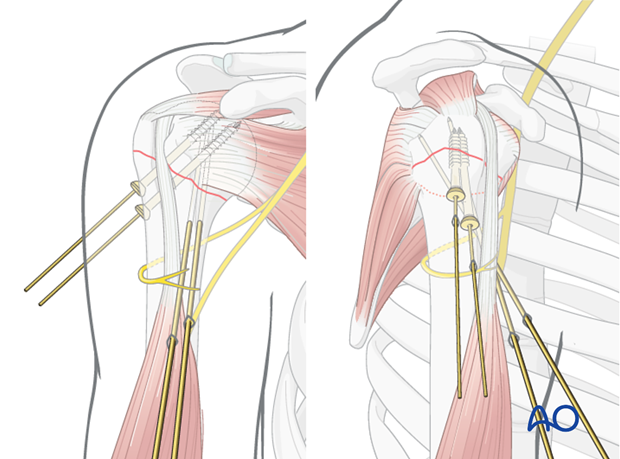
Check of osteosynthesis
Using image intensification, carefully check for correct reduction and fixation (including proper implant position and length) at various arm positions. Ensure that screw tips are not intraarticular.
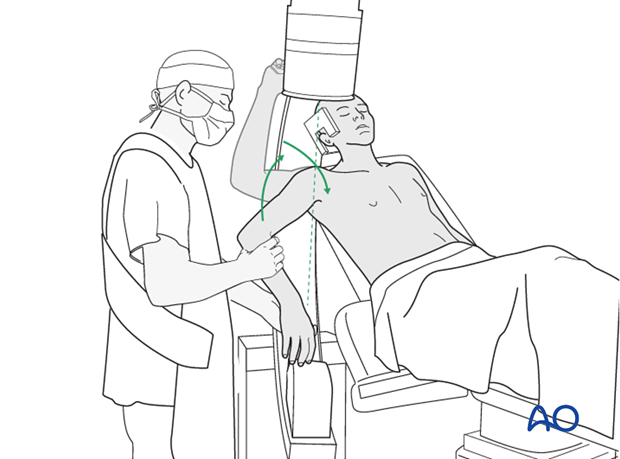
Remove K-wires
After confirming reduction and fixation, remove any guide and K-wires. Close wounds as needed.
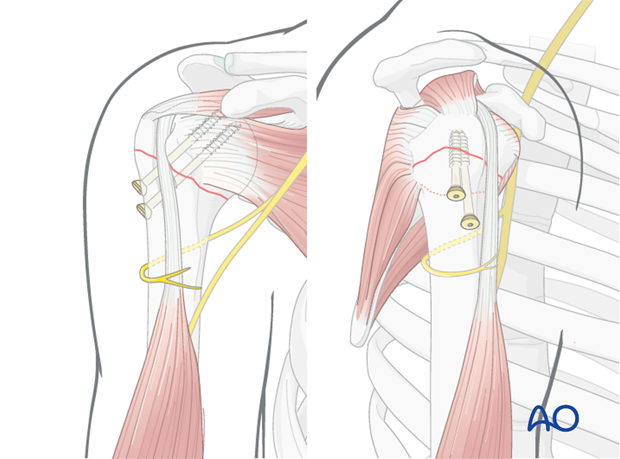
5. Overview of rehabilitation
The shoulder is perhaps the most challenging joint to rehabilitate both postoperatively and after conservative treatment. Early passive motion according to pain tolerance can usually be started after the first postoperative day - even following major reconstruction or prosthetic replacement. The program of rehabilitation has to be adjusted to the ability and expectations of the patient and the quality and stability of the repair. Poor purchase of screws in osteoporotic bone, concern about soft-tissue healing (eg tendons or ligaments) or other special conditions (eg percutaneous cannulated screw fixation without tension-absorbing sutures) may enforce delay in beginning passive motion, often performed by a physiotherapist.
The full exercise program progresses to protected active and then self-assisted exercises. The stretching and strengthening phases follow. The ultimate goal is to regain strength and full function.
Postoperative physiotherapy must be carefully supervised. Some surgeons choose to manage their patient’s rehabilitation without a separate therapist, but still recognize the importance of carefully instructing and monitoring their patient’s recovery.
Activities of daily living can generally be resumed while avoiding certain stresses on the shoulder. Mild pain and some restriction of movement should not interfere with this. The more severe the initial displacement of a fracture, and the older the patient, the greater will be the likelihood of some residual loss of motion.
Progress of physiotherapy and callus formation should be monitored regularly. If weakness is greater than expected or fails to improve, the possibility of a nerve injury or a rotator cuff tear must be considered.
With regard to loss of motion, closed manipulation of the joint under anesthesia, may be indicated, once healing is sufficiently advanced. However, the danger of fixation loosening, or of a new fracture, especially in elderly patients, should be kept in mind. Arthroscopic lysis of adhesions or even open release and manipulation may be considered under certain circumstances, especially in younger individuals.
Progressive exercises
Mechanical support should be provided until the patient is sufficiently comfortable to begin shoulder use, and/or the fracture is sufficiently consolidated that displacement is unlikely.
Once these goals have been achieved, rehabilitative exercises can begin to restore range of motion, strength, and function.
The three phases of nonoperative treatment are thus:
- Immobilization
- Passive/assisted range of motion
- Progressive resistance exercises
Immobilization should be maintained as short as possible and as long as necessary. Usually, immobilization is recommended for 2-3 weeks, followed by gentle range of motion exercises. Resistance exercises can generally be started at 6 weeks. Isometric exercises may begin earlier, depending upon the injury and its repair. If greater or lesser tuberosity fractures have been repaired, it is important not to stress the rotator cuff muscles until the tendon insertions are securely healed.
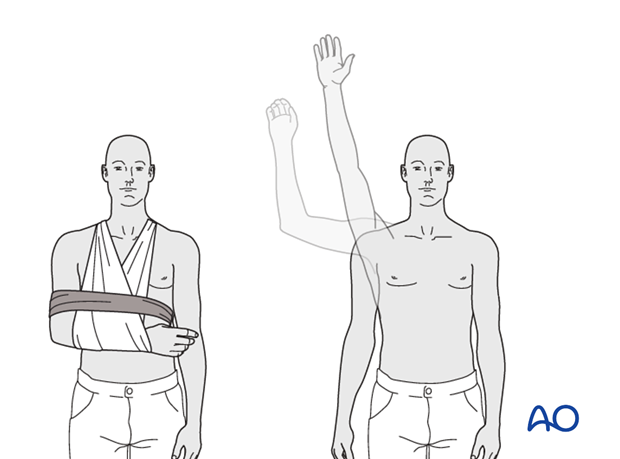
Special considerations
Glenohumeral dislocation: Use of a sling or sling-and-swath device, at least intermittently, is more comfortable for patients who have had an associated glenohumeral dislocation. Particularly during sleep, this may help avoid a redislocation.
Weight bearing: Neither weight bearing nor heavy lifting are recommended for the injured limb until healing is secure.
Implant removal: Implant removal is generally not necessary unless loosening or impingement occurs. Implant removal can be combined with a shoulder arthrolysis, if necessary.
Shoulder rehabilitation protocol
Generally, shoulder rehabilitation protocols can be divided into three phases. Gentle range of motion can often begin early without stressing fixation or soft-tissue repair. Gentle assisted motion can frequently begin within a few weeks, the exact time and restriction depends on the injury and the patient. Resistance exercises to build strength and endurance should be delayed until bone and soft-tissue healing is secure. The schedule may need to be adjusted for each patient.
Phase 1 (approximately first 3 weeks)
- Immobilization and/or support for 2-3 weeks
- Pendulum exercises
- Gently assisted motion
- Avoid external rotation for first 6 weeks
Phase 2 (approximately weeks 3-9)
If there is clinical evidence of healing and fragments move as a unit, and no displacement is visible on the x-ray, then:
- Active-assisted forward flexion and abduction
- Gentle functional use week 3-6 (no abduction against resistance)
- Gradually reduce assistance during motion from week 6 on
Phase 3 (approximately after week 9)
- Add isotonic, concentric, and eccentric strengthening exercises
- If there is bone healing but joint stiffness, then add passive stretching by physiotherapist












